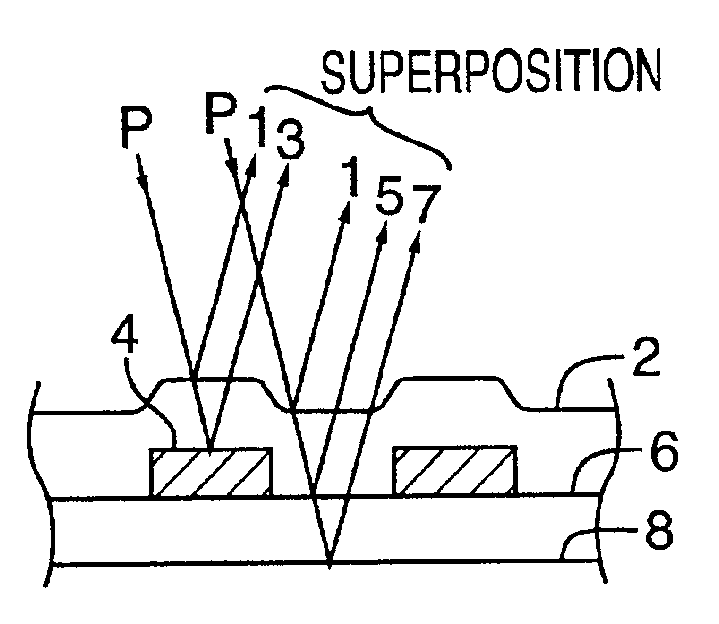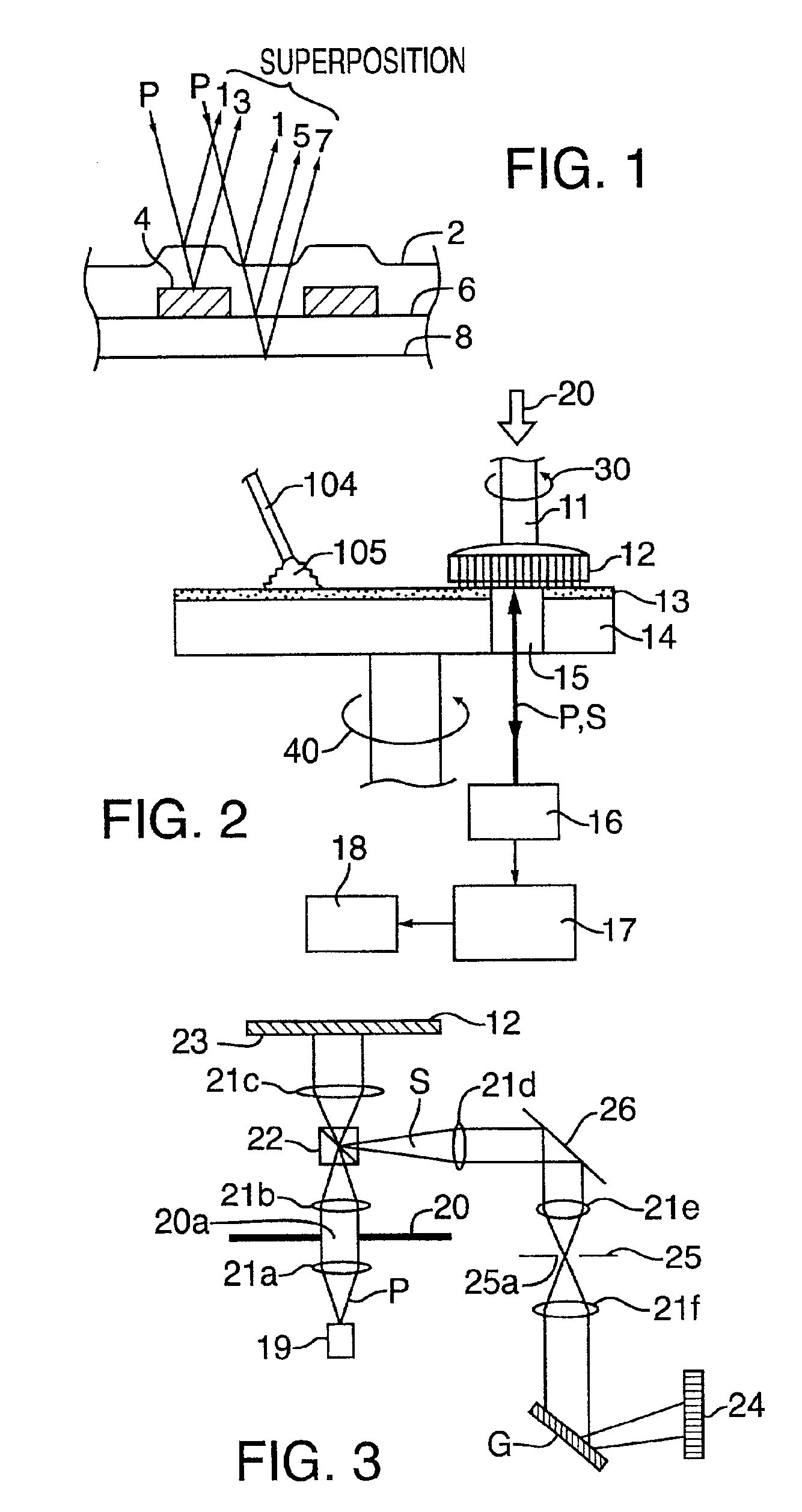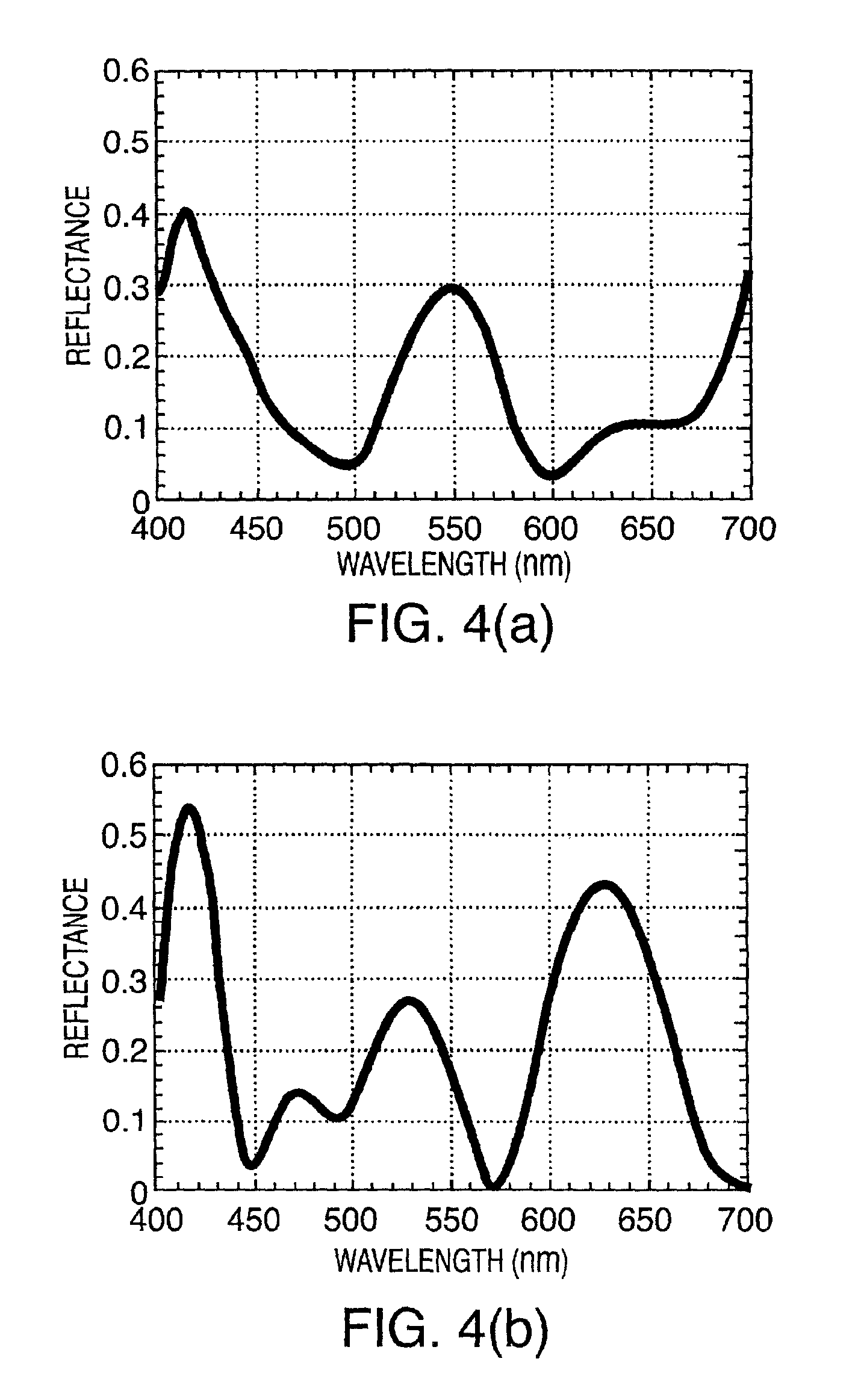Layer-thickness detection methods and apparatus for wafers and the like, and polishing apparatus comprising same
a technology of thickness detection and wafers, applied in the direction of lapping machines, semiconductor/solid-state device testing/measurement, instruments, etc., can solve the problems of uneven surface, short focal range of projection optics used in such apparatuses, and inability to detect uniform surfaces, etc., to achieve simple and convenient detection
- Summary
- Abstract
- Description
- Claims
- Application Information
AI Technical Summary
Benefits of technology
Problems solved by technology
Method used
Image
Examples
first embodiment
[0075]In this embodiment, wavelengths corresponding to local maxima of the spectral reflectance and wavelengths corresponding to local minima of the spectral reflectance are obtained by processing a spectral reflectance signal within the measurement wavelength range. Such local maxima and minima (along with their corresponding wavelengths) are used as measurement parameters of the spectral characteristic. For example, a polishing endpoint for a patterned wafer undergoing CMP can be detected with high accuracy by monitoring changes in the local maxima signals or changes in the local minima signals.
[0076]Besides simply local maxima and local minima of spectral reflectance, other useful parameters for measurement purposes are differences (e.g., local maximum−local minimum) and quotients (e.g., local maximum / local minimum). Also, in place of local maxima, the largest local maximum obtained in the measured wavelength range of the spectral reflectance can be used as a measurement paramete...
second embodiment
[0080]In the second embodiment, the wavelength dispersion of a reflectance signal (as a representative spectral characteristic) within the wavelength range of probe light is used as a measurement parameter. The dispersion of the wavelength of the resulting signal light changes as polishing progresses. The dispersion of signal-light wavelength exhibits a rapid change immediately before and after the polish endpoint is reached. Therefore, by monitoring the wavelength dispersion of the signal light and detecting when the dispersion exhibits a rapid change, the polish endpoint can be detected with high accuracy.
[0081]A suitable measure of wavelength dispersion is the standard deviation or variance of the signal-light wavelength. As the surface of the wafer is being polished, the signal-light dispersion exhibits a change. The dispersion exhibits a rapid increase immediately before and after the surface of the wafer is planarized. As in the first embodiment, the effect of pattern interfer...
third embodiment
[0082]In the third embodiment, the waveform of the spectral reflectance (as a representative spectral characteristic) of signal light is subjected to Fourier-transformation. An appropriate wavenumber component of the Fourier-transformed waveform is used as a measurement parameter. The wavenumber component rapidly increases immediately before and after the wafer surface reaches a planar condition.
[0083]This rapid increase is believed to be caused by the rapid increase in the interference component arising from the inter-pattern interference of the spectral reflectance signal immediately before and after the wafer surface is planarized.
[0084]The wavenumber component of the wave number that most rapidly increases immediately before and after the wafer surface is planarized can be determined for use as a measurement parameter by routine experiments and / or simulations.
PUM
 Login to View More
Login to View More Abstract
Description
Claims
Application Information
 Login to View More
Login to View More - R&D
- Intellectual Property
- Life Sciences
- Materials
- Tech Scout
- Unparalleled Data Quality
- Higher Quality Content
- 60% Fewer Hallucinations
Browse by: Latest US Patents, China's latest patents, Technical Efficacy Thesaurus, Application Domain, Technology Topic, Popular Technical Reports.
© 2025 PatSnap. All rights reserved.Legal|Privacy policy|Modern Slavery Act Transparency Statement|Sitemap|About US| Contact US: help@patsnap.com



